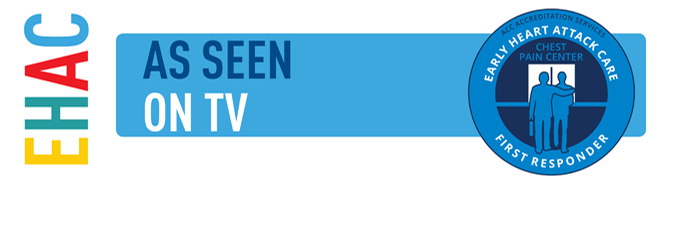EHAC Course:
Standard Course: Section 4 Television Heart Attacks

Unfortunately, heart attacks on television are merely “drama” and give viewers the wrong message. Heart attacks seen on television programs depict a dramatic cardiac arrest situation or someone who clutches their chest and collapses. Yet despite these end stage presentations, a study published in the New England Journal1 included television programs such as ER, Chicago Hope and Rescue 911 and the survival rate was 67%. This contrasts greatly with the actual CPR survival rate.
Thus, television programs not only teach the wrong message but also readily acknowledge this fact. Neal Baer, MD the writer and producer of ER is quoted as saying in a Journal of the American Medical Association (JAMA) article “that while efforts are made to depict accurate and credible medical care, the show’s dramatic foundation is primary.”
Early symptoms are rarely portrayed on television programs because they are not dramatic enough to get the viewer’s attention. It is a sad commentary, but it is true. One would hope that some day the television programs would see the value as well as the potential drama that could result in bringing out this message.
Notes:
1. “Cardiopulmonary resuscitation on television. Miracles and misinformation. N Engl J Med. 1996 Jun 13;334(24):1578-82. Diem SJ1, Lantos JD, Tulsky JA.”
2. Cardiac Event Survival and CPR Statistics are dependent on several factors. The rates can be higher or lower based on community response and where it occurs.
Next